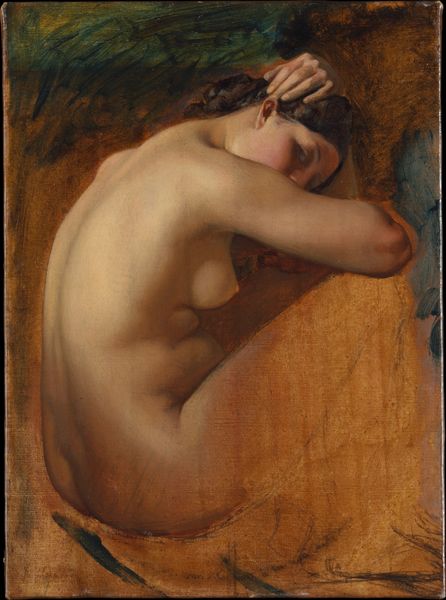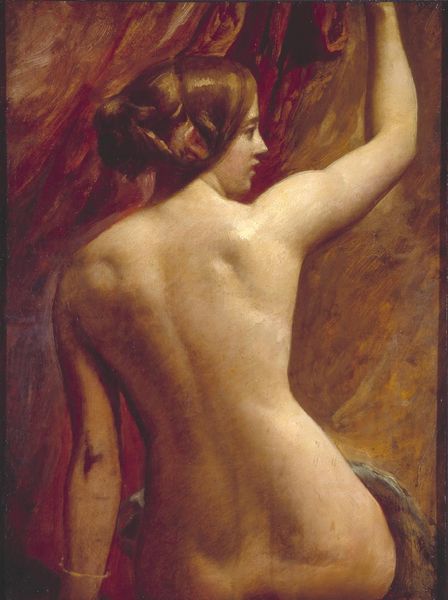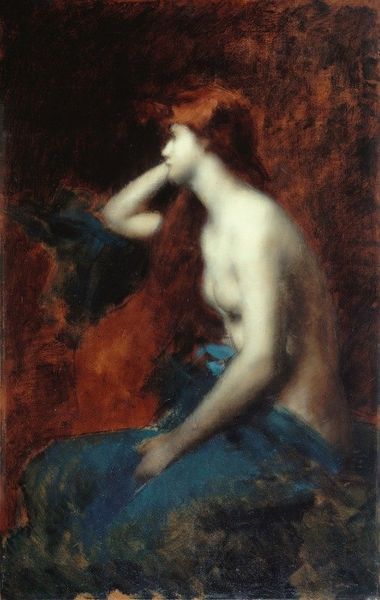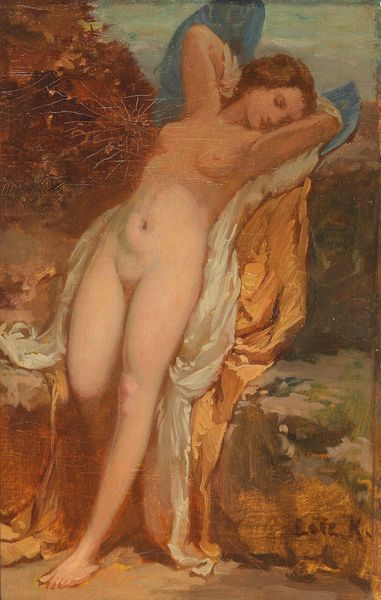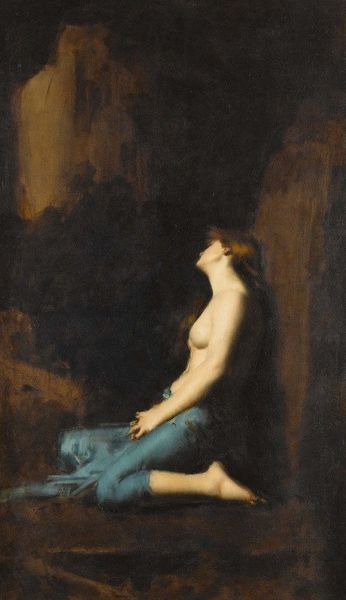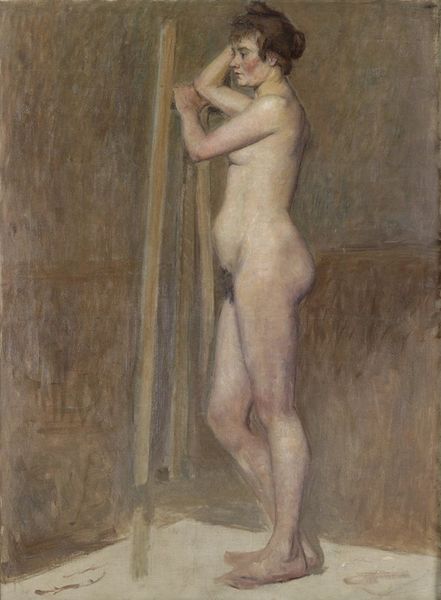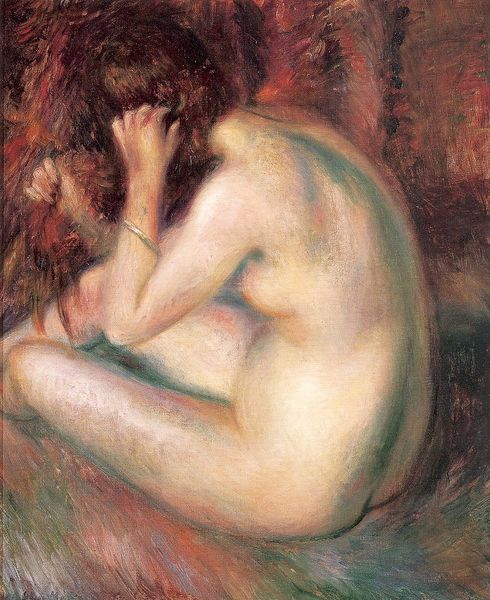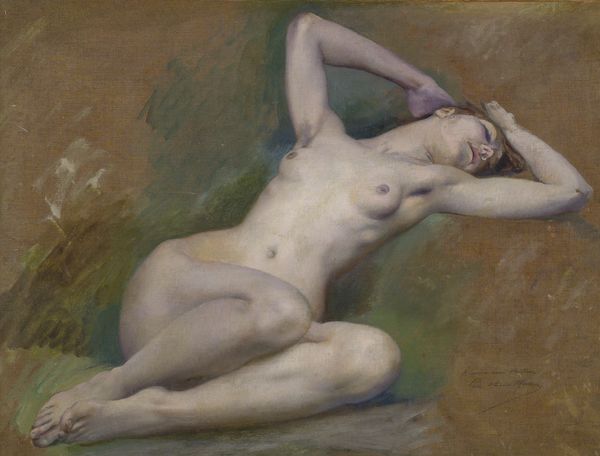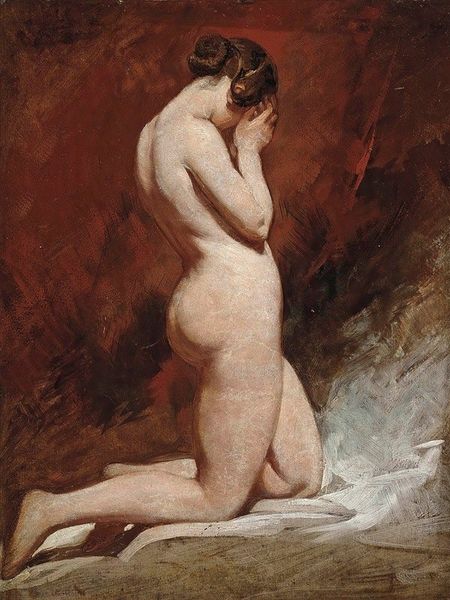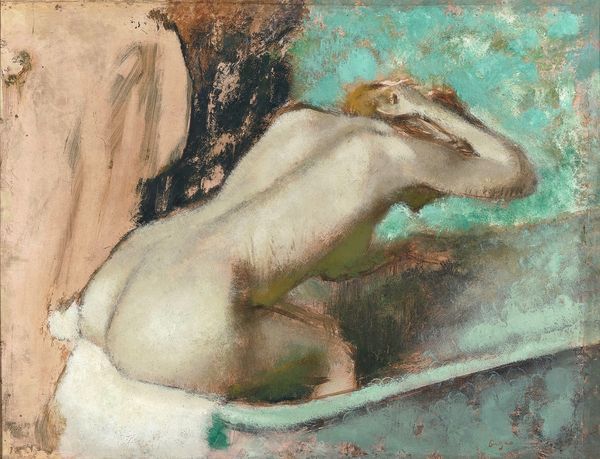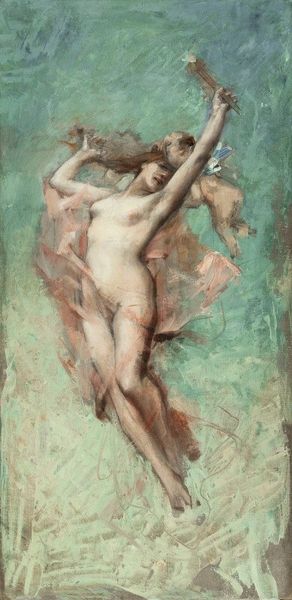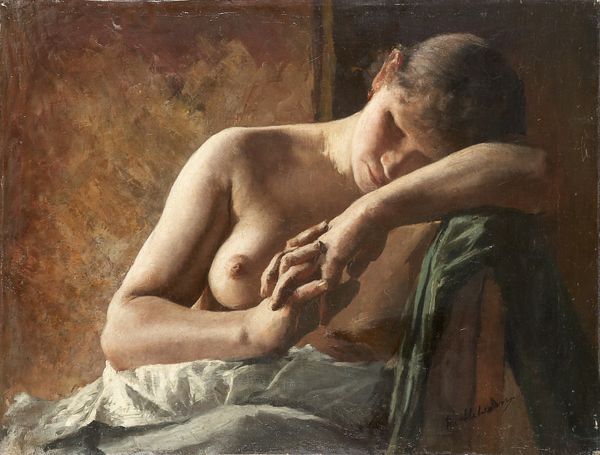
painting, oil-paint
#
figurative
#
painting
#
oil-paint
#
figuration
#
oil painting
#
romanticism
#
portrait drawing
#
academic-art
#
nude
#
portrait art
#
realism
Copyright: Public Domain: Artvee
Curator: This is Henri Lehmann's "Study of a Female Nude," painted in 1840 using oil on canvas. Editor: It’s interesting how she's almost fetal in posture, hunched over herself. There’s a certain vulnerability there, heightened by the darkness surrounding the figure. Curator: Exactly. It challenges conventional expectations of the female nude by positioning her in a gesture of introspection rather than outward display. This was a period grappling with evolving ideas around gender and representation; we see that conflict reflected in this piece. Is she empowered, or just another objectified figure within this frame? Editor: And it's rendered with such loose, expressive brushstrokes, especially in the background. I'm interested in the actual paint itself. The texture seems almost tactile, suggesting the physicality and labor involved in creating the image. How do those blurred, imprecise shapes inform our perception of the subject’s own form, especially when that is rendered using more definitive strokes? Curator: Right, think about it. Lehmann was part of the academic tradition but also engaged with the rising currents of Realism. He's pulling in both stylistic impulses. Consider this artwork alongside the socio-political context of 19th-century France, the emergence of feminist voices, and how female artists at that time grappled with their place in the art world. Does this composition reveal the exploitation in the art world itself by its traditional male domination? Editor: It raises a lot of crucial questions about the process of viewing, making, and even about whose body becomes the primary vehicle through which such ideas manifest within the art industry itself. You know, tracing those shifts from material conditions of art creation to a deeper understanding of historical identity and exploitation could fill hours! Curator: Precisely! Lehmann’s study invites reflection beyond aesthetic appreciation, fostering dialogue about representation, labor, and artistic intention. Editor: For me, it's those almost raw qualities, reminding me that paintings don't simply arrive but are made with hands. The art captures a nexus of time, identity and the very human drive to transform.
Comments
No comments
Be the first to comment and join the conversation on the ultimate creative platform.
